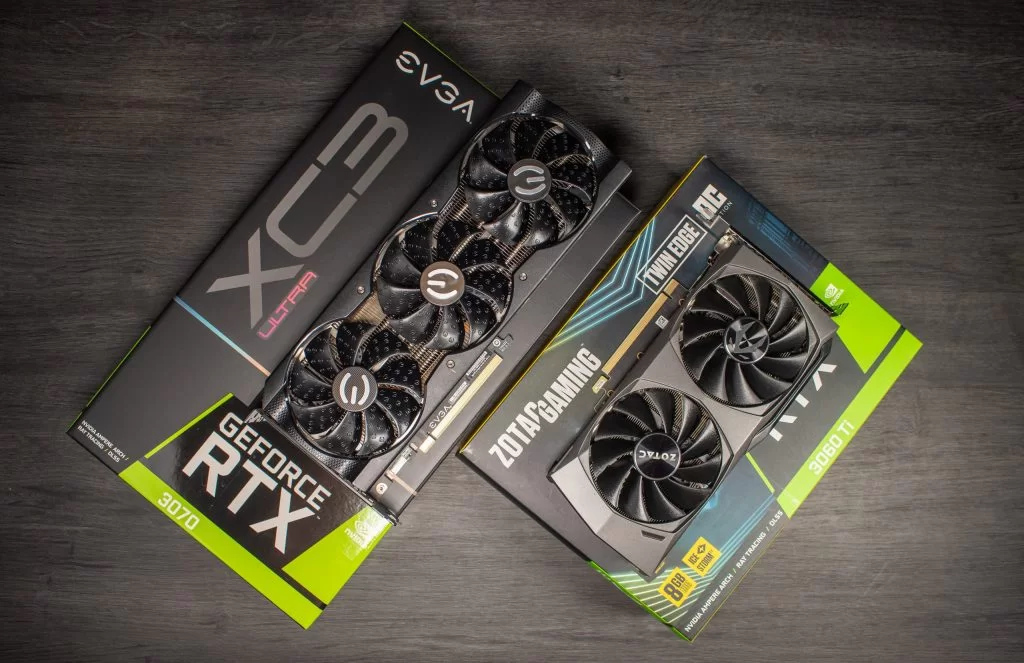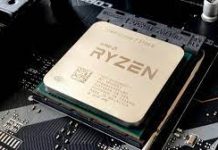Clash of the Titans: NVIDIA RTX 3060 vs. RTX 3070
In the ever-evolving world of gaming GPUs, the battle for supremacy rages on. NVIDIA’s RTX 3060 and RTX 3070, both formidable contenders in their own right, stand at the forefront of this fierce competition. As gaming enthusiasts and PC users seek the perfect graphics card for their needs, the choice between these two titans is not to be taken lightly.
Understanding the RTX 3060 and RTX 3070
GPU Basics
Before we dive into the intricate details of these GPUs, let’s start with the basics. A Graphics Processing Unit (GPU) serves as the engine behind your gaming experience, responsible for rendering the stunning visuals that immerse you in your favourite games.
NVIDIA’s Lineup
NVIDIA boasts an impressive lineup of GPUs, each tailored to cater to specific gaming and creative demands. The RTX 3060 and RTX 3070 find their place in this diverse spectrum, offering unique sets of features and capabilities.
Key Specifications
To appreciate the differences between these two GPUs, we need to dissect their key specifications:
- CUDA Cores: The number of CUDA cores directly impacts a GPU’s ability to handle complex calculations. Both the RTX 3060 and RTX 3070 come equipped with substantial CUDA cores.
- Clock Speeds: Clock speeds determine how quickly a GPU can execute instructions. These GPUs feature clock speeds designed to provide a seamless gaming experience.
- Memory: Adequate memory is vital for storing and swiftly accessing game assets. We’ll explore the memory configurations and their implications.
- Ray Tracing Capabilities: We’ll also delve into ray tracing, a technology that simulates realistic lighting, reflections, and shadows in games. Understanding how each GPU handles ray tracing is crucial.

Features and Innovations
Ray Tracing and DLSS
The gaming world has witnessed a revolution with the introduction of ray tracing and DLSS (Deep Learning Super Sampling) technologies. These advancements have the potential to elevate your gaming experience to new heights.
- RTX 3060: The RTX 3060 offers ray tracing capabilities, allowing for breathtakingly realistic lighting and reflections in supported games. DLSS, powered by AI, enhances performance by upscaling lower-resolution images, delivering a smoother gaming experience.
- RTX 3070: Stepping up the game, the RTX 3070 not only supports ray tracing but does so with even greater prowess. DLSS further magnifies its gaming capabilities, providing both visual fidelity and smooth frame rates. Gamers can expect remarkable realism without compromising performance.
Tensor and RT Cores
NVIDIA’s Tensor and RT cores are at the heart of these GPUs, enabling AI-driven rendering and ray tracing.
- RTX 3060: The RTX 3060 incorporates Tensor and RT cores, making it well-equipped for AI-based tasks and ray tracing. This translates into improved image quality and gaming performance, especially when indulging in ray-traced titles.
- RTX 3070: The RTX 3070, with its enhanced Tensor and RT cores, takes AI and ray tracing to the next level. It excels in delivering lifelike visuals, ensuring that even the most demanding games run smoothly.
Overclocking
Enthusiasts often seek to push their GPUs beyond their stock performance limits. Let’s explore the overclocking potential of these GPUs.
- RTX 3060: The RTX 3060 provides overclocking headroom, allowing users to fine-tune their GPU for added performance gains. While it may not reach the overclocking heights of higher-end models, it still offers a noticeable boost.
- RTX 3070: Overclocking enthusiasts will find the RTX 3070 to be a compelling choice. Its robust architecture allows for significant overclocking, providing a substantial bump in gaming performance. This is an excellent option for those looking to squeeze every drop of power from their GPU.
Connectivity and Ports
As gaming setups become increasingly complex, connectivity options play a vital role. Let’s examine the available ports and connectivity features.
- RTX 3060: The RTX 3060 typically offers a range of connectivity options, including multiple DisplayPort and HDMI ports. This ensures compatibility with a variety of monitors and accessories, allowing for flexible configurations.
- RTX 3070: Similarly, the RTX 3070 boasts a rich set of connectivity options, ensuring that users can connect to various display setups and accessories without limitations.
Gaming Performance and Benchmarks
Benchmark Context
To evaluate the true gaming prowess of these GPUs, we turn to benchmarks. These standardized tests provide invaluable insights into how the RTX 3060 and RTX 3070 handle various gaming scenarios.
Game Titles
We’re not just interested in numbers; we want to see how these GPUs perform in the games you love. We’ve conducted benchmarks on popular AAA titles to showcase real-world gaming experiences.
- Resolution and Settings: Gaming performance isn’t one-size-fits-all. We’ll explore how each GPU handles different resolutions, from the crispness of 1080p to the visual splendour of 1440p, and dissect the impact of graphics settings on frame rates.
Ray Tracing Performance
For enthusiasts who crave immersive realism, ray tracing is a pivotal feature. We’ll analyze how the RTX 3060 and RTX 3070 perform when ray tracing is pushed to the limit.
Real-World Experiences
Numbers tell part of the story, but personal experiences complete it. We’ve collected feedback from users who’ve embraced these GPUs in their gaming setups. Their anecdotes provide valuable insights into what it’s like to game with the RTX 3060 and RTX 3070.
Future-Proofing
Investing in a GPU isn’t just about the present; it’s about preparing for the gaming landscape of tomorrow. We’ll discuss the future-proofing capabilities of these GPUs and their potential to handle upcoming game releases and evolving technologies.
Pricing and Availability
Price Point
The decision to upgrade your GPU often comes down to budget considerations. We’ll compare the pricing of the RTX 3060 and RTX 3070 and examine their value propositions. Understanding the price-to-performance ratio is essential for those seeking the best bang for their buck.
Market Dynamics
The GPU market has witnessed its share of turbulence, with fluctuations in pricing and availability. We’ll address these market dynamics, shedding light on the challenges of acquiring these GPUs in the current landscape.
Alternative Options
Flexibility is key in the ever-changing world of GPUs. If the RTX 3060 and RTX 3070 prove elusive or outside your budget, we’ll suggest alternative GPUs that offer compelling performance within the same price range.
FAQs
Q1: What are the key differences between the RTX 3060 and RTX 3070?
A1: The RTX 3060 and RTX 3070 differ in several aspects. The RTX 3070 offers higher performance with more CUDA cores and memory. It excels in ray tracing and 1440p gaming. The RTX 3060, while capable, is slightly less powerful and ideal for 1080p gaming.
Q2: Which GPU is better for gaming at 1080p or 1440p resolutions?
A2: Both GPUs perform admirably at 1080p gaming, delivering smooth frame rates in most titles. If you’re looking for stellar performance at 1440p, the RTX 3070 provides a significant edge with its superior power.
Q3: How do ray tracing and DLSS impact gaming on these GPUs?
A3: Ray tracing enhances gaming visuals by simulating realistic lighting and reflections. DLSS, if supported, uses AI to upscale lower-resolution images, improving frame rates without sacrificing quality. The RTX 3070, with more ray tracing cores, delivers a better ray tracing experience.
Q4: Can the RTX 3060 and RTX 3070 handle VR gaming?
A4: Yes, both GPUs are VR-ready and capable of providing immersive virtual reality gaming experiences. Their robust performance ensures smooth VR gameplay.
Q5: Are there any known heating issues with these GPUs?
A5: Heating issues can vary based on specific card designs and cooling solutions. It’s crucial to ensure proper ventilation and consider the GPU’s thermal characteristics when building your PC to maintain optimal temperatures.
Q6: Which GPU offers better value for the price?
A6: The choice between value and performance depends on your budget and gaming goals. If you can afford it, the RTX 3070 offers better value with its superior performance, ray tracing capabilities, and future-proofing.
Q7: Are there any special considerations for upgrading to these GPUs from older models?
A7: Upgrading to the RTX 3060 or RTX 3070 may require checking your power supply’s wattage and connectors. These GPUs can be power-hungry, so ensure your PSU can support them. Additionally, consider potential CPU bottlenecks.
Q8: What is the expected availability timeline for these GPUs in the market?
A8: GPU availability can be subject to market dynamics and demand. It’s advisable to monitor official announcements from NVIDIA and reputable retailers for updates on availability.
Q9: How do these GPUs compare to AMD’s offerings in a similar price range?
A9: AMD also offers competitive GPUs in the same price range. To make an informed decision, compare benchmarks and features of AMD’s Radeon GPUs with the RTX 3060 and RTX 3070.
Q10: Can these GPUs handle content creation tasks effectively?
A10: Yes, both the RTX 3060 and RTX 3070 excel in content creation tasks thanks to their capable CUDA cores and memory. They are suitable for tasks like video editing, 3D rendering, and more.
Conclusion
As we wrap up this clash between the RTX 3060 and RTX 3070, the choice ultimately rests on your gaming or content creation aspirations, budget, and desired gaming experience. The RTX 3070 stands as a powerhouse, offering exceptional performance, ray tracing capabilities, and future-proofing for gamers seeking top-tier experiences.
For those with budget constraints, the RTX 3060 delivers admirable performance at 1080p and represents excellent value for your gaming rig. Whichever path you choose, both GPUs provide a gateway to immersive gaming and content creation, ensuring your PC setup is primed for excellence.




